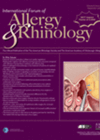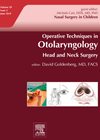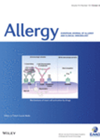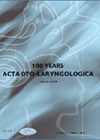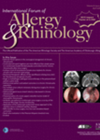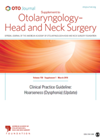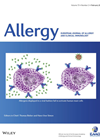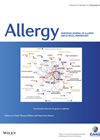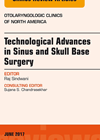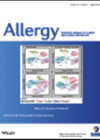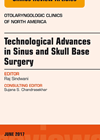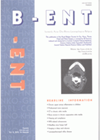
Journal Reviews
Sinonasal undifferentiated carcinoma – slowly getting there
The rarest of the rare, sinonasal tumours form only a small part of the total number of head and neck tumours and undifferentiated carcinoma (SNUC) is one of the rarest of this group. There is some data (and some expert...
The snotty child?
This article is interesting for those of us who see children regularly in secondary care but rarely see them with chronic rhinosinusitis. The authors remind the reader of the EPOS guidelines for diagnosis of CRS in children: two or more...
Chronic rhinosinusitis, are we treating the same disease?
Chronic rhinosinusitis (CRS) is a heterogenic disease. The effects of heterogeneity on treatment outcome are not very clear. Authors used clinical features such as endoscopic findings scores and full blood count findings in addition to analysis of 35 molecular markers....
Balloon compared to FESS – long-term patient satisfaction
Balloon compared to FESS – long-term patient satisfaction This paper is the first controlled study of balloon sinoplasty’s long-term efficacy, with a follow-up extending over five years. There were 208 patients analysed and 88 recruited. Exclusions were nasal polyps grade...
Method of delivery: all topical nasal corticosteroids are not made equal
There is an increasing body of evidence that the role of surgery for chronic rhinosinusitis is to facilitate the delivery of topical medical treatment – most notably, topical corticosteroids. Two recent studies, one using flow dynamics and another one examining...
Preoperative CT checklist (using the ‘CLOSE’ mnemonic) improves identification of anatomical variants for endoscopic sinus surgery
Computed tomography (CT) scans of the paranasal sinuses act as roadmaps for endoscopic sinus surgery (ESS) and careful inspection preoperatively warns the operating surgeon of critical anatomical variants. This study aimed to investigate if implementation of a pre-ESS CT checklist...
IL-25 and nasal polyps, another target
Immune response in chronic rhinosinusitis with nasal polyps (CRSwNP) is mainly via type 2 T-helper (Th2) cells while Th1 cells characterise chronic rhinosinusitis without nasal polyps (CRSsNP) immune response. CRSwNP is heterogeneous on a cytological level causing a varied response...
Stem cells in nasal polyposis
Chronic rhinosinusitis with nasal polyps (CRSwNP) is common and is multifactorial with increased T-helper 2 response and active role of interleukin 5. It can be associated with asthma and control of CRSwNP improves lower airway disease. Due to constant cellular...
Stenting and sinus surgery
Stents are used in sinus surgery with the aim of maintaining patency of sinus cavity avoiding restenosis from inflammation or scarring. The exact indication for stenting in sinus surgery however is still debated. The authors discussed the potential role of...
Precision medicine in allergic rhinitis and chronic rhinosinusitis
Precision medicine (PM) with its ‘four Ps’ (personalised, predictive, preventive and participatory) is about appreciating differences between individuals when offering management options for health problems. Multiple groups interested in rhinology such as EPOS and ARIA supported a review of the...
A review of topical treatments for chronic rhinosinusitis
Topical nasal treatment is considered the mainstay treatment for chronic rhinosinusitis (CRS). The authors reviewed the effectiveness of saline irrigation, topical corticosteroids, topical antibiotics and topical antifungals in the treatment of CRS. Large volume saline irrigation was found to be...
A new biomarker for chronic rhinosinusitis
This Chinese study looked at the feasibility of periostin (usually found in bone and lung tissue) as a biomarker for chronic rhinosinusitis. They sampled ethmoid mucosa in 12 patients with chronic rhinosinusitis without nasal polyposis (CRSsNP) and 25 patients with...

